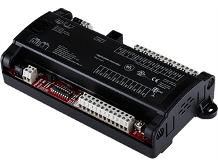
The “Protocol Implementation Conformance Statement,” or “PICS,” describes the BACnet capabilities of a particular BACnet implementation. These statements are relevant for developers in the testing and certification of a product. The PICS document is created by the manufacturer to identify the BACnet functionality in a product. The PICS for a specific product can be obtained from its manufacturer or downloaded from the BTL Listing website.
PICS have several uses:
- Product Selection: Specifiers and Facilities Managers use a PICS to determine if a given product has the correct BACnet functionality to meet the requirement needed for the product to work with other products in a Building Automation System (BAS).
- System Integration: Control system designers and programmers can use the PICS to determine what BACnet interoperability capabilities are available in a product.
- BTL Testing: a PICS is used by the testing organization, in addition to the BTL Checklist and the EPICS, to determine and confirm what testing is required on a product.
The format of a PICS is specified by the BACnet standard. The BACnet definitions are as follows:
22.1.1 Protocol Implementation Conformance Statement (PICS)
All devices conforming to the BACnet protocol shall have a Protocol Implementation Conformance Statement (PICS) that identifies all of the portions of BACnet that are implemented. This PICS shall contain all of the information described in 22.1.1.1 and shall be in the format found in Annex A.
22.1.1.1 PICS Contents
A PICS is a written document, created by the manufacturer of a device, that identifies the options specified by BACnet that are implemented in the device. A BACnet PICS is considered a public document that is available for use by any interested party. As a minimum, a BACnet PICS shall convey the following information.
- Basic information identifying the vendor and describing the BACnet device
- The BACnet Interoperability Building Blocks supported by the device (see Annex K)
- The standardized BACnet device profile to which the device conforms, if any (see Annex L)
- All non-standard application services that are supported along with an indication for each service of whether the device can initiate the service request, respond to a service request, or both
- A list of all standard and proprietary object types that are supported
- For each object type supported:
- any optional properties that are supported
- which properties can be written-to using BACnet services
- if the objects can be dynamically created or deleted using BACnet services
- any restrictions on the range of data values for properties
- The data link layer option options, both real and virtual, supported. (See Annexes H and J)
- Whether segmented requests are supported
- Whether segmented responses are supported
